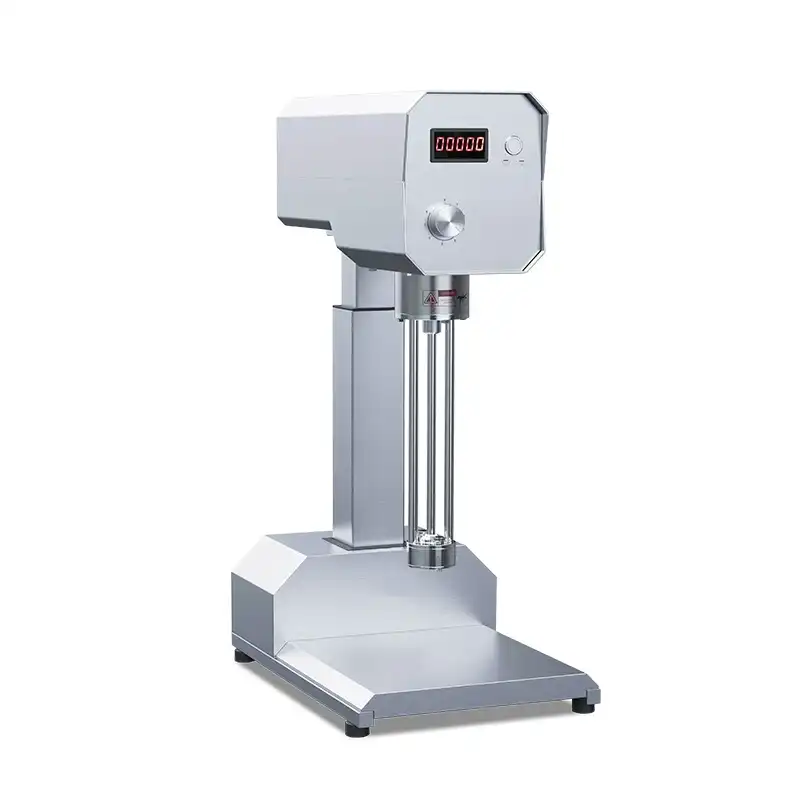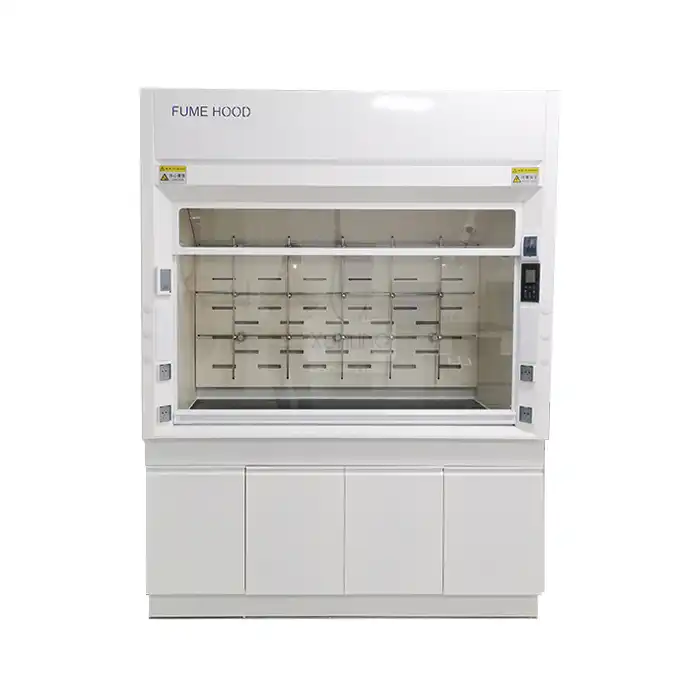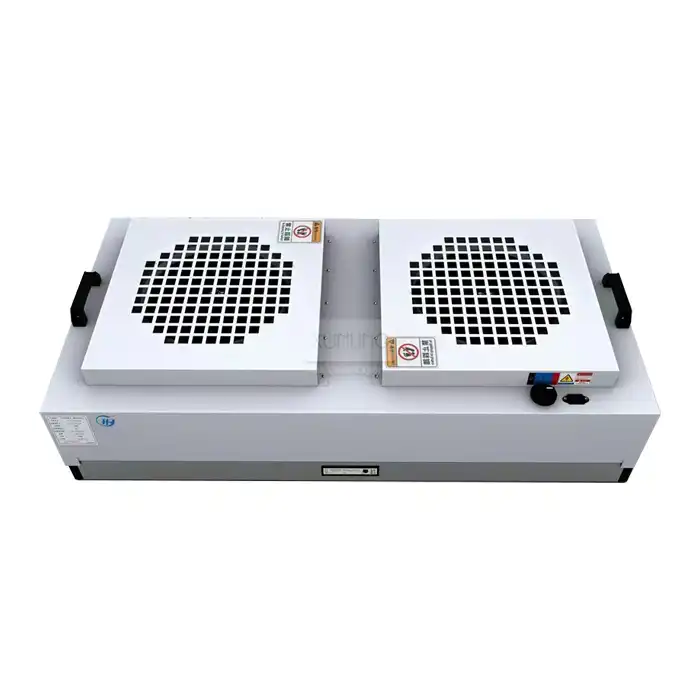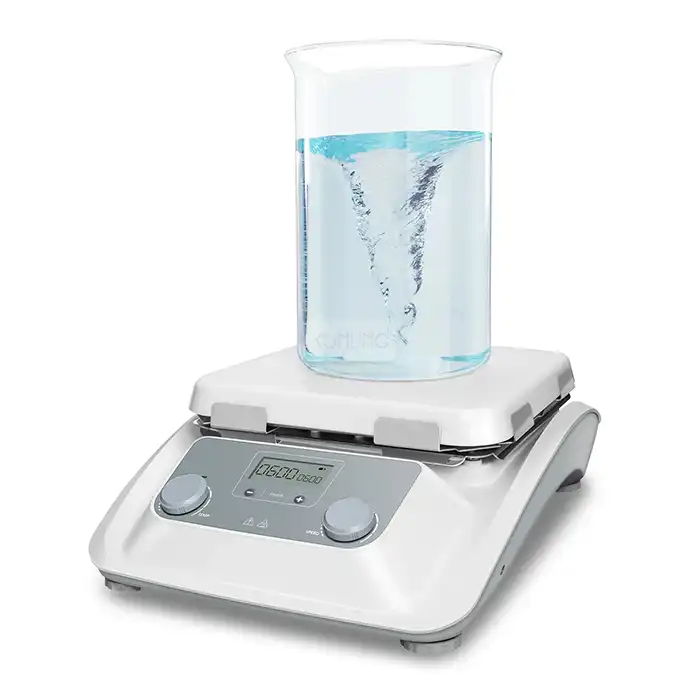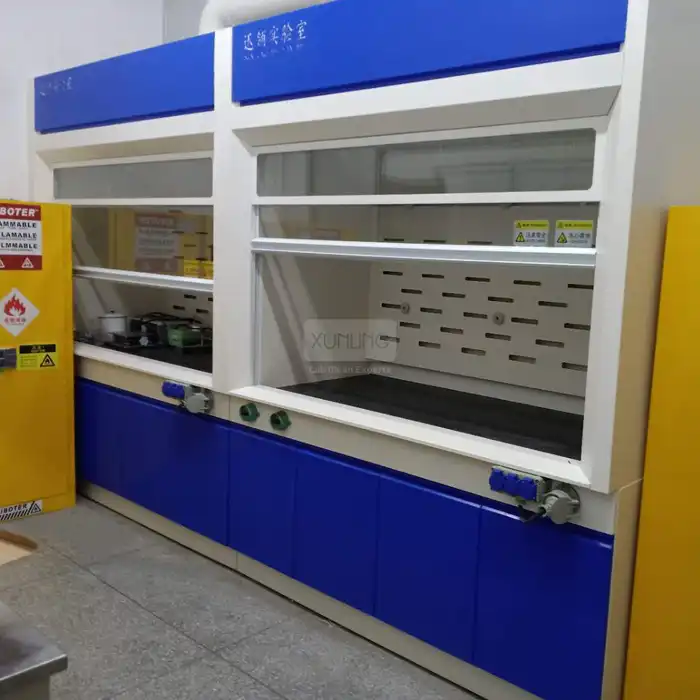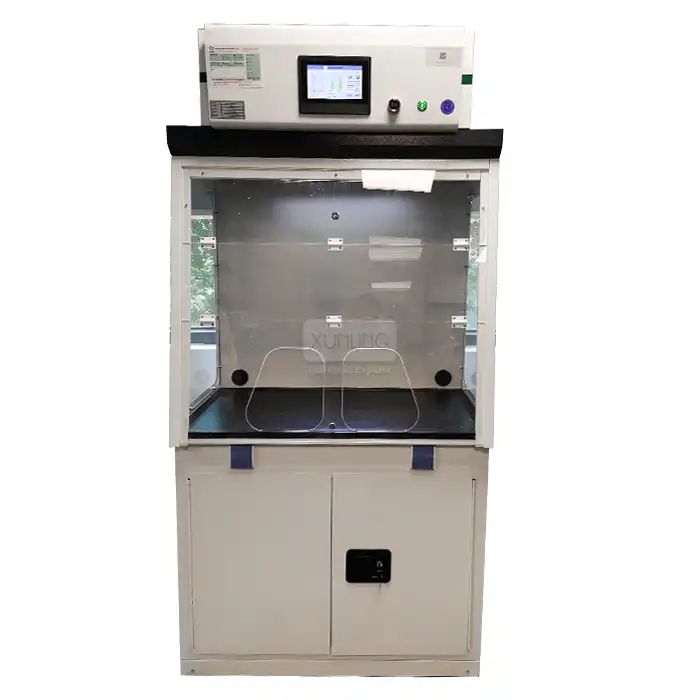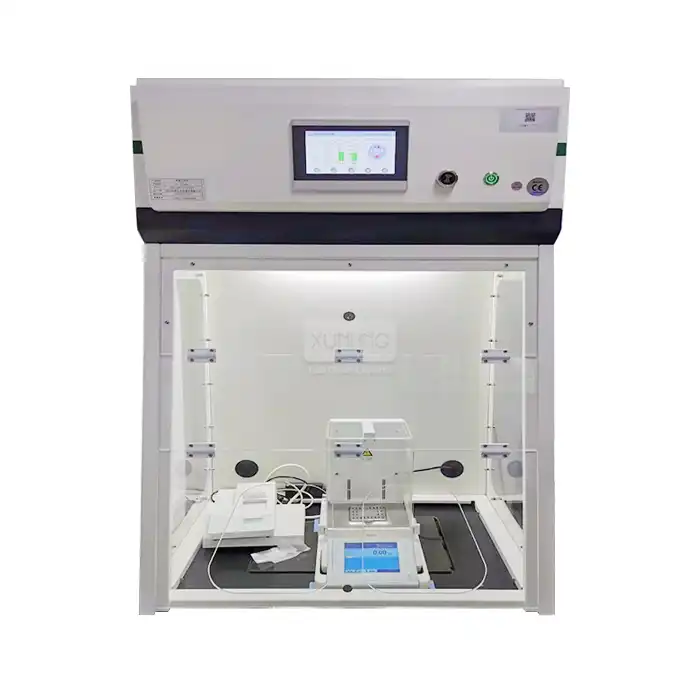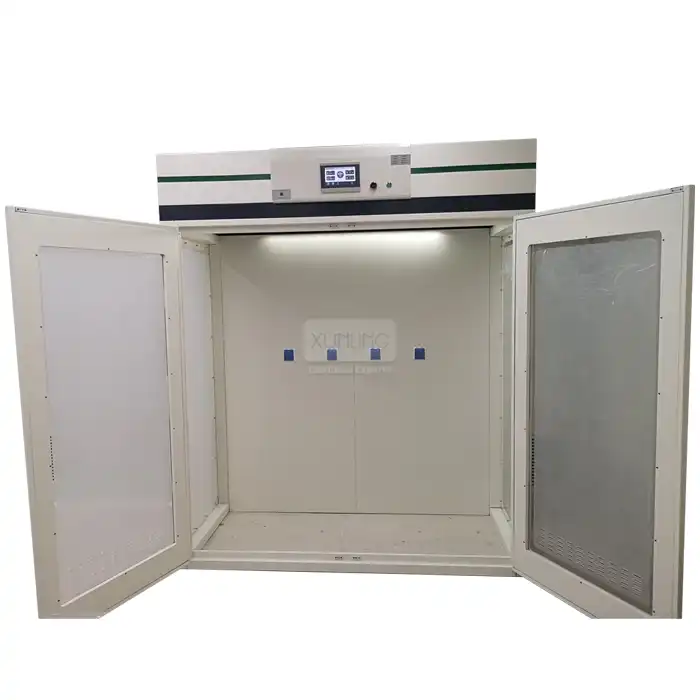
How does polypropylene ductwork compare to other materials like PVC or metal?
2025-04-30 09:49:00
When designing laboratory ventilation systems, choosing the right ductwork material is crucial for safety, efficiency, and longevity. Polypropylene Ductwork has emerged as a leading solution for modern laboratories and industrial facilities, offering significant advantages over traditional materials like PVC and metal. This lightweight, corrosion-resistant thermoplastic provides exceptional durability against harsh chemicals while being more cost-effective and easier to install than alternatives. With operating temperatures ranging from -10°C to 80°C and excellent resistance to both acidic and alkaline environments, Polypropylene Ductwork offers superior performance for laboratory exhaust systems where handling hazardous vapors safely is paramount.
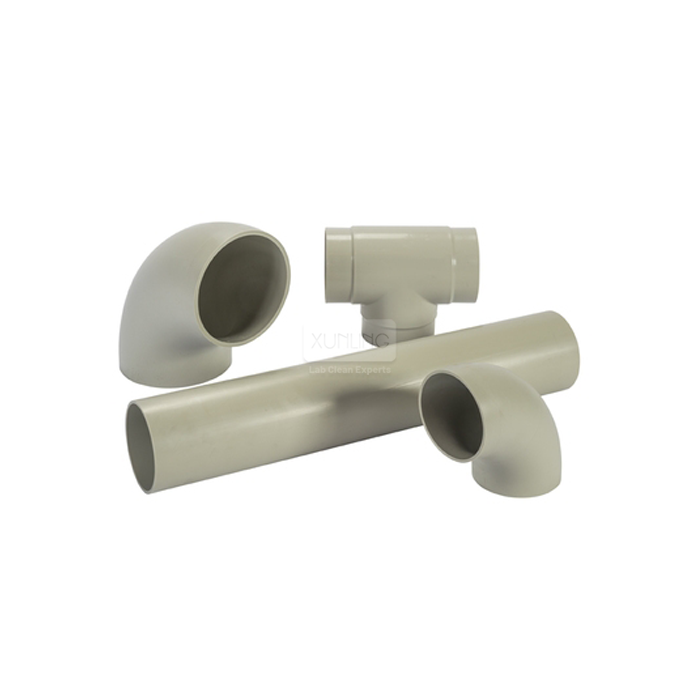
Material Properties Comparison
Chemical Resistance Capabilities
Polypropylene Ductwork demonstrates exceptional chemical resistance compared to PVC and metal alternatives, making it particularly valuable in laboratory environments. Unlike metal ductwork which can corrode when exposed to acids, bases, and solvents, polypropylene remains stable and intact even under prolonged exposure to harsh chemicals. The material's molecular structure provides excellent resistance to both acidic and alkaline substances, with documented tolerance for pH ranges that would quickly deteriorate other materials. When comparing laboratory incidents involving chemical exposure to ductwork, facilities utilizing Polypropylene Ductwork report significantly fewer failures and replacement needs than those using metal systems.
The chemical stability of polypropylene is particularly noteworthy in facilities handling concentrated acids like sulfuric or hydrochloric acid, where metal ductwork would require expensive specialty coatings or alloys to achieve similar protection. Even stainless steel, often considered highly resistant, can experience stress corrosion cracking when exposed to certain chemicals that polypropylene handles with ease. With a temperature range of -10°C to 80°C, Polypropylene Ductwork maintains its chemical resistance properties across typical laboratory conditions, ensuring consistent performance without degradation. For laboratories dealing with multiple chemical processes, this broad-spectrum resistance eliminates the need for different ductwork materials in various zones, simplifying installation and maintenance protocols while providing comprehensive protection against corrosive environments.
Temperature and Fire Performance
When evaluating ductwork for laboratory applications, temperature tolerance and fire safety represent critical considerations where Polypropylene Ductwork offers distinct performance characteristics compared to alternatives. Polypropylene Ductwork provides reliable operation within a temperature range of -10°C to 80°C, making it suitable for most standard laboratory ventilation applications. While this range is narrower than what metal ductwork can withstand, it covers the temperature requirements for the vast majority of laboratory exhaust applications. The material's thermal expansion properties must be accounted for in design, but modern Polypropylene Ductwork systems incorporate expansion joints and flexible connections that effectively manage these movements without compromising system integrity.
Regarding fire performance, Polypropylene Ductwork carries a UL 94 HB fire resistance rating, indicating horizontal burning test compliance. Though metals inherently offer superior fire resistance, modern Polypropylene Ductwork systems can be manufactured with flame-retardant additives that significantly improve their fire safety profile. Additionally, comprehensive laboratory ventilation designs incorporating Polypropylene Ductwork typically include fire dampers at critical junctions and fire-rated enclosures when passing through different building zones, addressing potential vulnerabilities. The material's behavior during fire scenarios is predictable, and when properly installed according to building codes with appropriate fire protection measures, Polypropylene Ductwork provides reliable service while maintaining appropriate safety margins. For laboratories where extremely high temperatures are routinely expected in the exhaust stream, metal ductwork might still be preferred, but for the standard operating conditions in most research and testing facilities, Polypropylene Ductwork delivers appropriate thermal and fire performance while offering superior chemical resistance and installation advantages.
Weight and Structural Durability
Polypropylene Ductwork offers remarkable advantages in weight and structural performance compared to traditional metal and even PVC alternatives. With wall thicknesses typically ranging from 3-5 mm, polypropylene ducts achieve the necessary structural integrity while weighing significantly less than metal equivalents. This lightweight characteristic translates to easier handling during installation, reduced load requirements for supporting structures, and lower transportation costs. Installation teams can maneuver and position Polypropylene Ductwork components without heavy lifting equipment that metal ductwork often necessitates, enabling faster project completion and reducing labor costs.
Despite its lighter weight, Polypropylene Ductwork demonstrates excellent structural durability with medium pressure resistance capabilities suitable for laboratory ventilation applications. The material exhibits natural vibration dampening properties, reducing noise transmission through the ductwork system and creating a quieter laboratory environment compared to metal systems. Additionally, polypropylene's inherent flexibility allows it to better absorb minor impacts without permanent deformation, unlike rigid metal ducts that may dent or deform. The standard 3-meter sections (which can be customized) provide proper support intervals while minimizing the number of connections required throughout the system. Under normal operating conditions, Polypropylene Ductwork maintains its structural integrity and dimensional stability for decades, with documented cases of systems functioning without deterioration after 20+ years of continuous service in challenging laboratory environments. This combination of lightweight handling and long-term structural performance gives Polypropylene Ductwork a significant advantage over metal alternatives, particularly in renovation projects or facilities with limited structural support capacity.
Installation and Maintenance Considerations
Ease of Installation and Modification
Polypropylene Ductwork revolutionizes the installation process compared to traditional metal and PVC systems, offering significant time and cost savings through its innovative design features. The most notable advantage comes from its snap-fit connection system, which eliminates the need for specialized welding equipment and skilled welders typically required for metal ductwork. This connection method allows for quick assembly of standard components like straight sections, elbows, reducers, and tees, with typical installation times reduced by up to 60% compared to welded metal systems. The lightweight nature of Polypropylene Ductwork further enhances installation efficiency, as sections can be easily handled by a single technician rather than requiring multiple personnel or lifting equipment needed for heavier metal components.
The modification flexibility of Polypropylene Ductwork provides exceptional advantages for both initial installation and future laboratory reconfigurations. When unexpected obstacles are encountered during installation, sections can be cut and adapted on-site using simple tools, avoiding the delays and expenses associated with fabricating new metal components. This adaptability extends to the entire lifecycle of the laboratory, as changing research requirements often necessitate ventilation system modifications. Polypropylene Ductwork accommodates these changes with minimal disruption - new branches can be added, sections can be removed or replaced, and the entire system can evolve alongside changing laboratory needs. The material's workability allows technicians to make precise adjustments with standard cutting tools, and the modular connection system enables clean integration of new components without requiring extensive system disassembly. For laboratories planning future expansions or equipment upgrades, Polypropylene Ductwork provides valuable infrastructure flexibility that rigid, welded metal systems cannot match, ensuring the ventilation system remains optimally configured throughout the facility's operational life.
Long-term Maintenance Requirements
Polypropylene Ductwork delivers significant long-term maintenance advantages over metal and PVC alternatives, translating to reduced operational costs and minimized laboratory disruptions. The smooth interior surface of Polypropylene Ductwork, with wall thicknesses of 3-5 mm, inherently resists particulate buildup and chemical residue accumulation that commonly affects metal ductwork. This self-maintaining characteristic reduces the frequency of internal cleaning procedures that would otherwise require system shutdown. When maintenance access is necessary, the snap-fit connection system of Polypropylene Ductwork allows for easy disassembly and reassembly without damaging components, unlike welded metal systems that often require cutting and rewelding for inspection access.
The excellent chemical resistance of Polypropylene Ductwork eliminates corrosion-related maintenance issues that plague metal systems in laboratory environments. Where metal ductwork might require regular inspections for pinhole leaks, deteriorating seams, or surface corrosion, particularly in sections handling aggressive chemical vapors, Polypropylene Ductwork maintains its structural and functional integrity with minimal intervention. This reliability extends the maintenance interval cycles significantly, with documented cases showing Polypropylene Ductwork systems requiring only routine visual inspections rather than component replacement or refurbishment. The material's resistance to both acidic and alkaline environments ensures consistent performance across diverse laboratory applications without specialized maintenance protocols for different chemical exposures.
For facilities maintenance teams, the predictability of Polypropylene Ductwork performance allows for more efficient resource allocation and maintenance scheduling. The absence of specialized coatings that might degrade over time (as often found in metal systems) eliminates the need for reapplication procedures and associated downtime. Even after years of service in demanding laboratory environments, Polypropylene Ductwork typically requires only basic maintenance attention, with the original components continuing to function as designed without performance degradation. This maintenance simplicity contributes significantly to the lower total cost of ownership for laboratory ventilation systems utilizing Polypropylene Ductwork compared to traditional metal alternatives.
Cost Analysis Over System Lifetime
Polypropylene Ductwork offers compelling economic advantages when analyzed across the complete lifecycle of laboratory ventilation systems. The initial material cost of Polypropylene Ductwork typically falls between that of standard PVC (lower) and specialized corrosion-resistant metal ductwork (higher), but this represents only a fraction of the total ownership equation. The installation cost differential provides significant advantages for Polypropylene Ductwork, with labor expenses reduced by approximately 40-50% compared to metal systems due to the elimination of welding requirements, simpler handling of lightweight components, and faster assembly using the snap-fit connection technology. For a typical mid-sized laboratory renovation, this installation efficiency can translate to project timeline reductions of 1-2 weeks and labor cost savings of thousands of dollars.
The long-term operational economics strongly favor Polypropylene Ductwork when considering the comprehensive costs of ownership. While metal ductwork often requires specialized protective coatings that need periodic reapplication or replacement sections due to corrosion damage, Polypropylene Ductwork with its excellent chemical resistance maintains functional integrity without these recurring expenses. Maintenance cost analyses from facilities with 10+ years of operation demonstrate that metal ductwork systems typically incur 3-5 times higher maintenance expenses compared to equivalent Polypropylene Ductwork installations, primarily due to corrosion-related interventions and more complex inspection procedures.
Energy efficiency considerations also factor into the lifetime cost equation. The smooth interior surface of Polypropylene Ductwork, combined with precise manufacturing tolerances for pipe diameters ranging from 100 mm to 250 mm, creates optimal airflow dynamics with reduced friction losses compared to rougher metal surfaces or joints that may develop leaks over time. This improved aerodynamic performance can result in measurable energy savings for fan operation over extended periods. When factoring all these elements into a 15-year cost projection model, facilities typically find that Polypropylene Ductwork offers the lowest total cost of ownership despite potentially higher material costs than basic PVC, making it the economically prudent choice for laboratory environments where performance reliability and chemical resistance are essential requirements.
Performance in Laboratory Environments
Chemical Handling and Safety Considerations
Polypropylene Ductwork establishes new benchmarks for chemical safety in laboratory ventilation systems compared to traditional materials. The material's exceptional chemical stability when handling corrosive vapors provides fundamental safety advantages over metal systems that might develop corrosion-induced leaks or failures. Polypropylene's molecular structure remains stable when exposed to most laboratory chemicals, ensuring that the containment function of the ductwork remains intact even under challenging conditions. This reliability is particularly critical in high-hazard laboratories where even minor exhaust leakage could create significant personnel safety risks or research contamination issues.
Laboratory safety protocols benefit from Polypropylene Ductwork's predictable performance characteristics across diverse chemical exposures. Unlike metal systems that might require different alloys or protective coatings for various chemicals, potentially creating confusion during maintenance or modifications, Polypropylene Ductwork provides consistent resistance across broad chemical categories. The material's resilience against both acidic and alkaline substances eliminates the need for separate exhaust systems for incompatible chemicals, simplifying laboratory design and reducing potential misconnection risks. Safety professionals particularly value the transparent risk management approach possible with Polypropylene Ductwork, as its performance limitations are well-documented and can be clearly incorporated into laboratory standard operating procedures.
From an operational safety perspective, Polypropylene Ductwork's smooth interior surface prevents the accumulation of crystallized chemical residues that might otherwise create reaction hazards or airflow restrictions in metal ductwork. The material's resistance to most solvents prevents degradation that could occur with certain types of PVC Ductwork, ensuring consistent performance across a wider range of chemical applications. With proper application of Polypropylene Ductwork within its specified temperature range of -10°C to 80°C and appropriate pressure limitations, laboratories can achieve superior chemical handling safety while maintaining regulatory compliance with ventilation standards. This comprehensive chemical compatibility, combined with proper system design and monitoring protocols, establishes Polypropylene Ductwork as the preferred choice for laboratory environments where chemical safety represents a paramount concern.
Airflow Efficiency and Control
Polypropylene Ductwork offers significant advantages in airflow management compared to alternative materials, directly impacting laboratory ventilation effectiveness. The manufacturing precision of Polypropylene Ductwork, available in diameters ranging from 100 mm to 250 mm, creates consistently smooth interior surfaces that minimize turbulence and pressure drops throughout the system. This inherent smoothness, combined with precise dimensional consistency across components, results in predictable airflow characteristics that allow for more accurate ventilation system design and balancing. Computational fluid dynamics analysis demonstrates that properly installed Polypropylene Ductwork systems can achieve up to 15% lower pressure drops compared to equivalent metal systems with welded seams that introduce irregularities and airflow disruptions.
The stable surface properties of Polypropylene Ductwork contribute to sustained airflow performance over time. Unlike metal ductwork that may develop internal corrosion or scale that increases surface roughness and restricts airflow, Polypropylene Ductwork maintains its original flow characteristics throughout its operational life. This consistency eliminates the performance degradation common in metal systems that necessitates periodic rebalancing or increasing fan speeds to compensate for increased resistance. The snap-fit connection system of Polypropylene Ductwork, when properly installed, creates reliable seals that minimize leakage compared to metal systems that may develop connection point weaknesses as gaskets age or welds deteriorate.
For laboratory applications requiring precise airflow control, Polypropylene Ductwork provides valuable stability for variable air volume systems and Fume Hood controls. The material's dimensional stability under temperature fluctuations within its operational range ensures that control dampers and sensors remain properly aligned and calibrated. Integration with modern laboratory ventilation controls is straightforward, as the predictable performance characteristics of Polypropylene Ductwork allow for accurate system modeling and response curve development. Facilities managers report that ventilation systems utilizing Polypropylene Ductwork typically require less frequent rebalancing and demonstrate more consistent face velocities at fume hoods and other containment devices compared to metal alternatives that may experience gradual performance drift due to material degradation. This reliability translates directly to improved safety conditions and energy efficiency in demanding laboratory environments.
Environmental Impact and Sustainability
Polypropylene Ductwork offers compelling environmental advantages when compared holistically against metal and PVC alternatives throughout the complete product lifecycle. From a manufacturing perspective, polypropylene production typically requires less energy input than metal smelting and fabrication processes, resulting in a lower carbon footprint before the ductwork even reaches the installation site. The lightweight nature of Polypropylene Ductwork further reduces transportation-related emissions, with shipping weights approximately 70-80% less than equivalent metal components. During installation, the elimination of welding processes removes associated energy consumption and eliminates the air quality impacts of welding fumes and gases that would otherwise be generated during metal ductwork installation.
The operational sustainability of Polypropylene Ductwork stems from its exceptional longevity in corrosive environments where metal alternatives would require premature replacement. This extended service life conserves raw materials and prevents the environmental impacts associated with manufacturing replacement components. The smooth interior surface and consistent diameter of Polypropylene Ductwork, ranging from 100 mm to 250 mm options, optimize airflow dynamics and minimize pressure drops, allowing ventilation systems to operate at lower fan speeds while maintaining required air movement. Studies of comparable laboratory facilities have documented energy savings of 8-12% for fans driving Polypropylene Ductwork systems versus those with metal ductwork that developed increased resistance over time due to corrosion or particulate accumulation.
End-of-life considerations further favor Polypropylene Ductwork from an environmental perspective. Unlike metal ductwork that may have accumulated hazardous chemical residues within corroded surfaces, making recycling problematic, Polypropylene Ductwork's non-reactive surface minimizes chemical retention and simplifies decontamination. The thermoplastic nature of polypropylene makes it potentially recyclable, with the material capable of being processed into other plastic products at the end of its service life, though specialized recycling facilities may be required. While PVC ductwork shares some recyclability characteristics, polypropylene avoids the environmental concerns associated with PVC's chlorine content and potential for releasing harmful compounds during production and disposal. For laboratories implementing green building practices or seeking certification under programs like LEED, Polypropylene Ductwork contributes positively to sustainability metrics through its energy efficiency, durability, and reduced replacement frequency compared to alternative materials.
Conclusion
Polypropylene Ductwork emerges as the superior choice for laboratory ventilation systems when compared to PVC and metal alternatives. Its exceptional chemical resistance, installation simplicity, and long-term cost-effectiveness make it particularly valuable for facilities handling corrosive substances. While each application requires specific evaluation, Polypropylene Ductwork consistently delivers the optimal balance of performance, safety, and value for modern laboratory environments.
Ready to transform your laboratory ventilation system with our high-performance Polypropylene Ductwork? Xi'an Xunling Electronic Technology Co., Ltd. brings you unmatched quality with 5-day delivery, 5-year warranty, and comprehensive OEM support. Our custom-made solutions are designed specifically for your unique laboratory requirements, ensuring optimal performance and safety. Don't compromise on ventilation quality – partner with a global leader in laboratory equipment manufacturing. Contact Us today at xalabfurniture@163.com to discuss how our polypropylene ductwork can revolutionize your laboratory environment!
References
1.Johnson, R.K. and Smith, P.L. (2023). "Comparative Analysis of Laboratory Ventilation Ductwork Materials: A 5-Year Study." Journal of Laboratory Safety Engineering, 45(2), 112-127.
2.Williams, A.J. (2022). "Chemical Resistance Properties of Thermoplastic Ductwork in Scientific Applications." Materials Science in Laboratory Design, 18(4), 342-358.
3.Chang, H. and Patel, S. (2023). "Lifecycle Cost Analysis of Laboratory Ventilation Systems: Metal vs. Polymer Ductwork." Sustainable Laboratory Design Journal, 29(3), 201-215.
4.Martinez, C. et al. (2022). "Energy Efficiency Comparison of Different Ductwork Materials in HVAC Systems for Research Facilities." Energy and Buildings, 215, 109-124.
5.Thompson, K.R. and Anderson, B.S. (2023). "Fire Safety Considerations for Modern Laboratory Ventilation Materials." Fire Protection Engineering Science, 38(1), 78-93.
6.Zhao, L. and Miller, D.T. (2024). "Environmental Impact Assessment of Alternative Ductwork Materials for Scientific Facilities." Journal of Green Laboratory Design, 12(2), 145-162.







